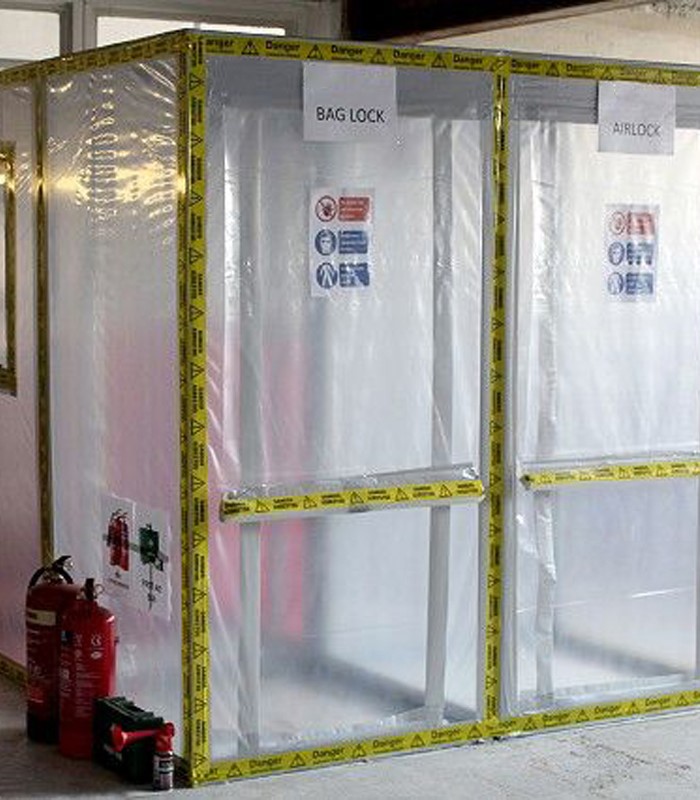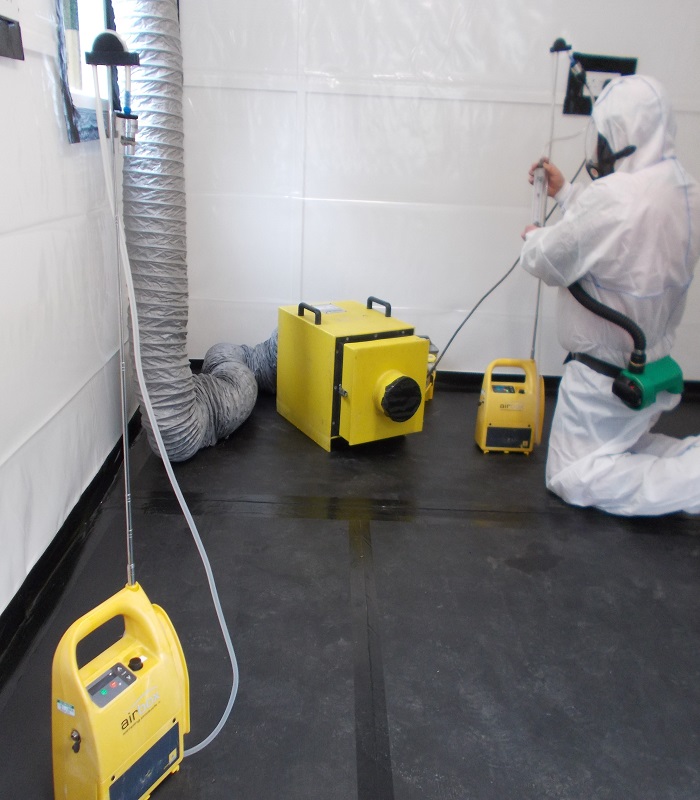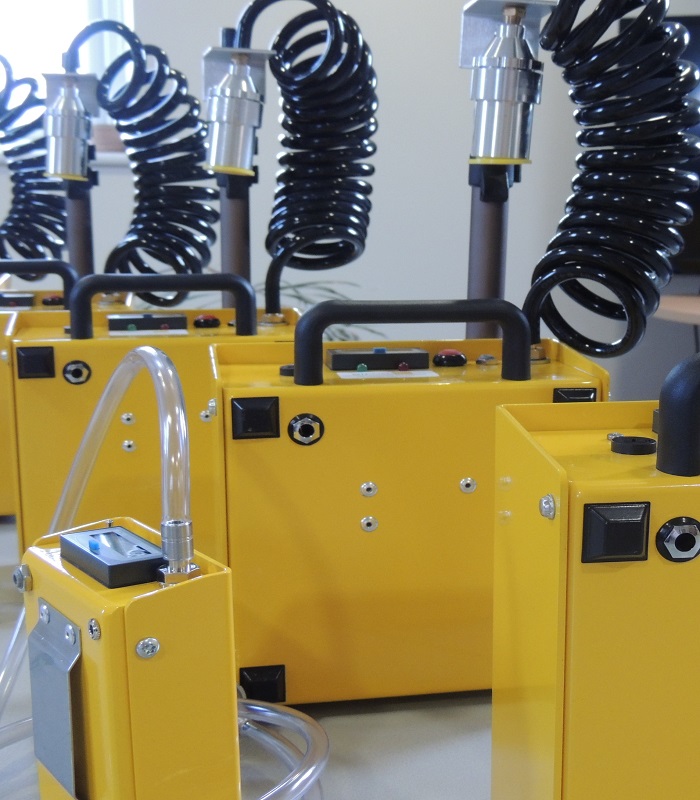We are UKAS Accredited to ISO/IEC 17025 and all air testing is undertaken in accordance with HSG248 ‘The Analyst Guide’. All of our asbestos analysts hold the P403 and P404 proficiency certificates as a minimum standard. Our analysts also hold CSCS cards, are DBS checked and are fully trained in general health & safety, working at heights, lone working and confined spaces.

Mobile laboratories
We run a fleet of mobile laboratories enabling all works to be undertaken on site. Hard copy documentation is left on site, later followed by PDF documents via email.
4 Stage Clearances & Certificate of Reoccupation
Once removal within an enclosure has been completed, it is the responsibly of the Analyst to undertake a 4 Stage Clearance. This involves a thorough visual inspection of the enclosure, externally and internally, to ensure it meets acceptable standards. A disturbed air test (clearance air test) is then undertaken to ensure the concentration of fibres within the air is below the clearance indicator value. When all stages have passed a Certificate of Reoccupation is issued.
Leak Testing (enclosures)
During the removal of asbestos within enclosures it is highly recommended that air testing is undertaken to ensure the integrity of the enclosure. Leak Testing is undertaken to areas where potential breaches of the enclosure could occur or where access and egress to the enclosure is made. The testing is undertaken using Phase Contrast Microscopy and a Certificate of Fibre Concentration is issued.
Background / Reassurance Air Testing
During asbestos works outside an enclosure, prior to works commencing and after works have been completed it can be beneficial to undertake asbestos air testing. The testing is undertaken to establish the asbestos fibre levels within the air. This type of testing is also associated with external soil works where removal or disturbance of contaminated soils are undertaken. This type of testing is undertaken to the perimeter of the site and the weather conditions are documented on the certificate. All testing is undertaken using Phase Contrast Microscopy and a Certificate of Fibre Concentration is issued.
Personal Monitoring
On occasions, monitoring of operatives is required. Personal monitoring requirements must be considered when planning a job. When monitoring an asbestos removal job, the operative should give clear instructions about the purpose of the sampling. All sampling should be carried out for sufficient durations: shift duration (preferably 2-4 hour periods) or the duration of specific tasks being observed. When considering personal exposure, results should be reported as a 4-hour, time weighted average.
Hygiene Unit Clearance Certificates
The Hygiene Unit is used to decontaminate personnel who have entered the enclosure. To allow safe removal of the Hygiene Unit it must be clean and pass a clearance test. A certificate will be issued which must be fixed to the inside of the unit.
Asbestos Removal Contractor Compliance
Core undertake Contractor Compliance on asbestos removal projects to assist Clients. This work includes reviewing method statements, keeping logs of trained personnel (training dates, face fit dates & medicals), equipment checks, enclosure checks and daily site diaries. This work allows a Client to feel confident that the removal process is overseen independently to the removal company.
Asbestos Air Monitoring FAQs
What is asbestos air testing?
It is the process of measuring the concentration of asbestos fibres in the air to determine if they pose a risk to human health and safety.
Why is asbestos air testing necessary?
It is necessary to identify if asbestos fibres are present in the air, to be able to take the appropriate measures to protect human health and safety.
How is asbestos air testing conducted?
Asbestos air testing is undertaken by asbestos analysts in accordance with HSG248 Asbestos: ‘The Analysts’ Guide’.
Who is qualified to conduct asbestos air testing?
Asbestos air testing must be conducted by analysts who hold the BOHS P403 and P404 proficiency certificates as a minimum standard, and who are employed by companies accredited by UKAS to ISO/IEC 17025.
What equipment is used for asbestos air testing?
The key equipment includes pumps and filters which are used to collect the samples and slides and microscopes used to analyse the samples.
How accurate is the asbestos air testing?
Asbestos air testing is very accurate. It must be undertaken by qualified analysts working for UKAS accredited companies, who work in line with stringent procedures in accordance with HSG248 Asbestos: The Analysts’ Guide.
What are the different types of asbestos air testing?
The different types of asbestos air testing include 4 Stage Clearances & Certificate of Reoccupation, Leak Testing (enclosures), Background / Reassurance Air Testing and Personal Monitoring.
How long does it take to get the results of asbestos air testing?
Air testing is undertaken in mobile laboratories and results are available immediately following the testing.
What kind of certificate is issued after asbestos air testing?
A certificate is issued showing the number of fibres detected at the time the air testing took place and is often accompanied by a plan showing the location of the pumps used, together with photographs of the work area.
What should I do if asbestos fibres are found in the air?
Action only needs to be taken if fibre levels are above the acceptable level. Where they are found to be above this level, access to the area will need to be restricted until suitable remedial works are undertaken.


